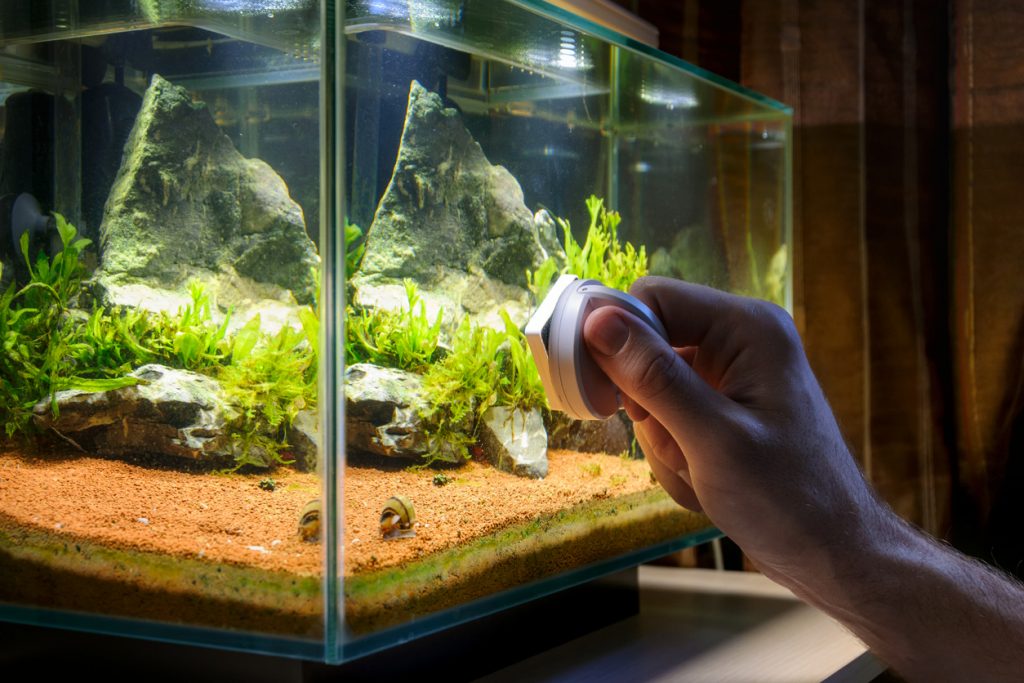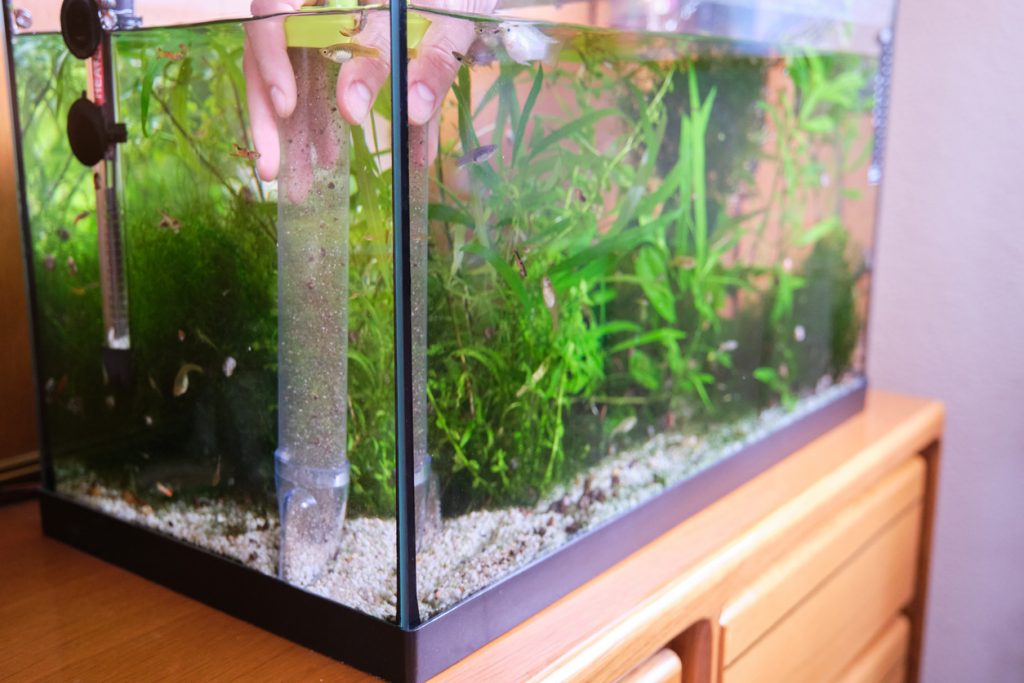Cleaning your aquarium regularly is essential to keep your fish happy and healthy. But since aquariums depend on beneficial bacteria, it can be confusing to figure out how much to clean your tank without disrupting these microscopic helpers. Read on to find out how often to clean a fish tank, learn what to do, and gain some tips on dealing with common issues such as cloudy water.
Why should you clean a fish tank?
First things first: why do you need to clean your aquarium? Unlike a stream or pool in nature, an aquarium is a small and closed system. This means that you will need regular maintenance to stop waste such as fish poo and uneaten food causing a build-up of toxins in the water.
You do have to be a bit careful about cleaning though, as a fish tank is a delicate ecosystem that relies on beneficial bacteria to help maintain the water quality. If you were to scrub your fish tank out thoroughly, you would get rid of these bacteria and do more harm than good. This means that it’s important to develop a routine that strikes a balance between doing too much and too little.
When to clean a fish tank – and what to do!
So, what should you do and how often? On a daily basis, check your tank and make sure your fish look happy and healthy and all your equipment is working properly. Uneaten food is a major cause of poor water quality, so check that there isn’t any food left over after you’ve fed your fish. If they do leave some food, remove this with a siphon and cut down the amount you give them next time. It’s easy to overfeed fish as they always look hungry, so check out our article on how to feed fish for some tips and tricks.
As well as removing uneaten food every day, it is also best to clean the tank every week or two. To do this, remove any algae from the inside of the tank surfaces, dislodge debris from plants, and then use a siphon to remove any debris from the substrate. After this, perform a partial water change in which you replace about 15–25% of the water in the tank. For this, it’s best to use treated water or ‘aged water’ (water that has stood for at least a day) as the pH will be closer to that of the water in your tank.

Less frequently, perhaps every month, it is worth performing maintenance on your filter. What you will need to do depends on the type of filter you have, so it will help to look up guidance on your particular equipment. As a general rule though, make sure you use water from your aquarium rather than tap water to rinse filter media. If you need to change your filter media, you will retain more beneficial bacteria if you can avoid replacing all the media at once.
It’s also advisable to use a water test kit to monitor the pH, ammonia, nitrite and nitrate levels in your tank on a monthly basis. This will let you know if toxic chemicals are beginning to build up, which might indicate you need to update your cleaning routine. Water test kits are also useful to check for disruption in the water conditions after you’ve made a change such as adding more fish.
Why fish tank water is cloudy
If you notice that the water in your fish tank has become cloudy, it’s worth working out why so you can deal with the problem and stop it happening again. The likely causes and the best thing to do will depend on whether your tank is new or well-established.
Cloudy water in an established tank can be due to excess waste such as decaying plants, fish poo or uneaten food. To deal with this, remove the debris and perform regular partial water changes. If uneaten food is a problem, make sure you adjust your feeding schedule to avoid overfeeding your fish.
If your water is cloudy, it’s also important to check the filter to make sure it is working properly and big enough for your tank, and perform filter maintenance as necessary. It’s also worth testing the water quality to check the level of toxins, and monitoring that the quality improves after you have taken steps to deal with the cloudy water.
Cloudy water in a new fish tank
When you’re setting up a new fish tank, it’s not uncommon for the water to become cloudy. If the water looks cloudy immediately after you have filled the tank, this may be because the gravel has not been washed enough, and you can solve this problem simply enough by draining the tank and washing the gravel thoroughly. If this doesn’t clear the water up, it’s worth checking the pH of the water and thinking about adding a water conditioner.
Sometimes, however, the water takes some days or weeks to become cloudy, and this is most likely due to fish tank bacteria bloom. This develops because the good bacteria that maintain the water quality won’t have set up home yet. While they are getting established, the water can become cloudy due to other less helpful bacteria.
Establishing a healthy population of good bacteria is called ‘cycling the tank’. During this phase, it’s really important not to overstock the tank as there won’t be enough bacteria around to remove toxins from the water. To learn more about a fish tank bacteria cycle, check out our article.

While cleaning is generally a good idea when you see cloudy water in an established fish tank, this is not the case when a new tank is cycling. In this situation, it’s generally best to leave the tank and let the water settle down as the good bacteria get established. Provided your filter is working properly, cleaning it at this stage may do more harm than good, as you will be disrupting the new bacterial colonies. Do check that you are not overfeeding your fish though, remove uneaten food, and monitor the level of toxic products with water test kits to make sure your fish are OK.
Green water in a fish tank
If your fish tank water is green, this is most likely due to a growth of algae. As well as cleaning to remove the algae, you will need to address the underlying cause. A common cause of algae growth is excess light – for example if the tank is in direct sunlight. Luckily, this can be solved relatively easily by moving the tank.
Another cause is excess nitrates or phosphates in the water. Sometimes there can be a high level of phosphates in the water source, so testing your tap water with a water test kit is a wise idea.
Phosphates and nitrates also come from decaying fish food, so again it’s worth checking that you’re not overfeeding your fish. Also, since nitrates are found in fish waste, make sure to keep on top of cleaning and partial water changes and make sure your tank is not overstocked. Routine filter maintenance will also help maintain good water quality.
Found these tips helpful? Join Vital Pet Club’s e-news to be the first to hear about exclusive pet freebies and pet care tips!


